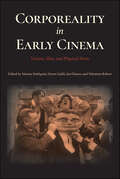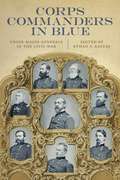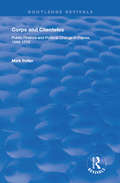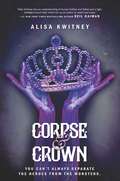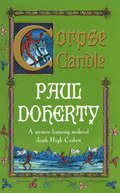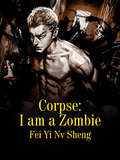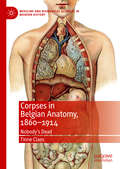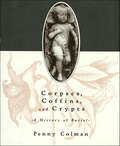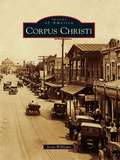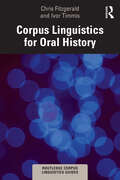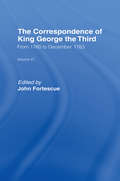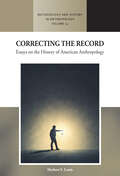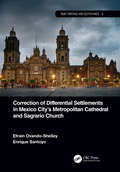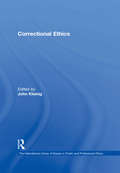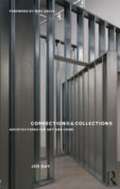- Table View
- List View
Corporation: The Pathological Pursuit of Profit and Power (Collection Revue Commerce)
by Joel BakanAs incisive as Eric Schlosser's bestselling Fast Food Nation, as rigorous as Joseph E. Stiglitz's Globalization and Its Discontents, and as scathing as Michael Moore's Stupid White Men, Joel Bakan's new book is a brilliantly argued account of the corporation's pathological pursuit of profit and power. An eminent law professor and legal theorist, Bakan contends that the corporation is created by law to function much like a psychopathic personality whose destructive behavior, if left unchecked, leads to scandal and ruin.In the most revolutionary assessment of the corporation as a legal and economic institution since Peter Drucker's early works, Bakan backs his premise with the following claims: • The corporation's legally defined mandate is to pursue relentlessly and without exception its own economic self-interest, regardless of the harmful consequences it might cause to others—a concept endorsed by no less a luminary than the Nobel Prize-winning economist Milton Friedman. • The corporation's unbridled self-interest victimizes individuals, society, and, when it goes awry, even shareholders and can cause corporations to self-destruct, as recent Wall Street scandals reveal. • While corporate social responsibility in some instances does much good, it is often merely a token gesture, serving to mask the corporation's true character. • Governments have abdicated much of their control over the corporation, despite its flawed character, by freeing it from legal constraints through deregulation and by granting it ever greater authority over society through privatization.Despite the structural failings found in the corporation, Bakan believes change is possible and outlines a far-reaching program of concrete, pragmatic, and realistic reforms through legal regulation and democratic control.Backed by extensive research, The Corporation draws on in-depth interviews with such wide-ranging figures as CEO Hank McKinnell of Pfizer, Nobel Prize-winner Milton Friedman, business guru Peter Drucker, and critic Noam Chomsky of MIT.
Corporations and American Democracy
by William J. Novak Naomi R. LamoreauxRecent Supreme Court decisions in Citizens United and other high-profile cases have sparked disagreement about the role of corporations in American democracy. Bringing together scholars of history, law, and political science, Corporations and American Democracy provides essential grounding for today’s policy debates.
Corporeality in Early Cinema: Viscera, Skin, and Physical Form (Early Cinema in Review)
by Edited by Marina Dahlquist, Doron Galili, Jan Olsson and Valentine RobertCorporeality in Early Cinema inspires a heightened awareness of the ways in which early film culture, and screen praxes overall are inherently embodied. Contributors argue that on- and offscreen (and in affiliated media and technological constellations), the body consists of flesh and nerves and is not just an abstract spectator or statistical audience entity.Audience responses from arousal to disgust, from identification to detachment, offer us a means to understand what spectators have always taken away from their cinematic experience. Through theoretical approaches and case studies, scholars offer a variety of models for stimulating historical research on corporeality and cinema by exploring the matrix of screened bodies, machine-made scaffolding, and their connections to the physical bodies in front of the screen.
Corps Commanders in Blue: Union Major Generals in the Civil War (Conflicting Worlds: New Dimensions of the American Civil War)
by Ethan S. RafuseThe outcomes of campaigns in the Civil War often depended on top generals having the right corps commanders in the right place at the right time. Mutual trust and respect between generals and their corps commanders, though vital to military success, was all too rare: Corps commanders were often forced to exercise considerable discretion in the execution of orders from their generals, and bitter public arguments over commanders' performances in battle followed hard on the heels of many major engagements. Controversies that arose during the war around the decisions of corps and army commanders-such as Daniel Sickles's disregard of George Meade's orders at the Battle of Gettysburg-continue to provoke vigorous debate among students of the Civil War. Corps Commanders in Blue offers eight case studies that illuminate the critical roles the Union corps commanders played in shaping the war's course and outcome. The contributors examine, and in many cases challenge, widespread assumptions about these men while considering the array of internal and external forces that shaped their efforts on and off the battlefield. Providing insight into the military conduct of the Civil War, Corps Commanders in Blue fills a significant gap in the historiography of the war by offering compelling examinations of the challenges of corps command in particular campaigns, the men who exercised that command, and the array of factors that shaped their efforts, for good or for ill.
Corps and Clienteles: Public Finance and Political Change in France, 1688-1715
by Mark PotterThis title was first published in 2003. Corps and Clienteles offers a unique approach to this debate by focusing on the intersection between institutions and personal relationships in the financial strategies surrounding Louis XIV's final two wars. It argues that, in appealing to the elite for financial support to wage war, Louis in return stabilised many of the structures on which the elite stood, entrenched elements of privilege throughout the political landscape, and devolved power to provincial institutions. Especially with the participation of privileged corps as financial intermediaries, the politics of war finance in the last twenty five years of Louis' reign profoundly influenced the direction in which absolutism developed through the remainder of the Old Regime. The book situates the period 1688 to 1715 as a crucial stage in the development of absolutism; tying the choices available to Louis XIV with the structures and institutions that he inherited from his predecessors, while setting his approach apart.
Corpse & Crown
by Alisa KwitneyAgatha DeLacey’s family isn’t rich or titled, so studying nursing at Ingold’s East End hospital in London is a rare opportunity for her. Despite the school’s focus on the innovative Bio-Mechanical program, Aggie cares more about the desperately poor human patients who flood the hospital, even if that means providing unauthorized treatment after-hours…and trusting a charming, endlessly resourceful thief.But the Artful Dodger is barely a step ahead of his underworld rivals, the menacing Bill Sykes and mercurial Oliver Twist, and Aggie’s association with him soon leads her into danger. When a brutal attack leaves her blind, she and the Dodger find themselves at the mercy of an experimental Bio-Mech surgery. Though the procedure restores Aggie’s sight, her new eyes come at an unnerving cost, and the changes in Dodger are even more alarming—instead of seeing Aggie as the girl he fancies, he now views her as a potential threat.As war between England and Germany brews on the horizon and a sinister medical conspiracy threatens to shatter the uneasy peace in Europe, Aggie and the Dodger must find a way to work together so they can protect their friends and expose the truth…even if it means risking their own survival.
Corpse Candle (Hugh Corbett Mysteries, Book 13): A gripping medieval mystery of monks and murder
by Paul DohertyA phantom horseman. A murdered abbot. A locked door. Paul Doherty weaves an intricately plotted mystery in Corpse Candle, in which Sir Hugh's powers of deduction are tested by one of his most puzzling cases. Perfect for fans of Susanna Gregory and Michael Jecks.'Paul Doherty has captured the atmosphere of an enclosed community where there is nowhere to hide from an assassin who appears not to have a motive. Well written... A thumping good read' - South Wales ArgusThe Brothers of the abbey of St Martin's-in-the-Marsh usually pay little heed to the tales of robber baron Sir Geoffrey Mandeville's ghost galloping through the Lincolnshire fens with a retinue of ghastly horsemen. They may hear the shrill blast of a phantom hunting horn, or see the corpse candles glowing in the dark, but none really accepts the peasants' belief that these flickering lights can forewarn men of their own deaths. The monks are protected by the monastery's high wall and their powerful abbot - a friend of King Edward I - and, although their leaders sometimes argue over the abbey's future, their lives are peaceful and comfortable. But then Abbot Stephen is found murdered in his chamber, with the door and windows locked from the inside, and Sir Hugh Corbett, Keeper of the King's Seal, arrives to investigate.What readers are saying about Corpse Candle:'This book [has] elegance, history and mystery that will make you scared but wanting to turn the page''Intrigue is maintained throughout with interesting twists''Another excellent book that just could not be put down!'
Corpse Candle: A Medieval Mystery Featuring Hugh Corbett (#13)
by Paul DohertyThe brothers of the abbey of St Martin's-in-the-Marsh pay little heed to the tales of robber baron Sir Geoffrey Mandeville's ghost galloping through the Lincolnshire fens with a retinue of ghastly horseman. They may hear the shrill blast of a hunting horn, or see the corpse candles glowing in the dark, but their comfortable life is protected by a high wall and their powerful abbot. Until Abbot Stephen, a friend of the King, is found dead and Sir Hugh Corbett, Keeper of the King's Seal, arrives to investigate.
Corpse Candle: A gripping medieval mystery of monks and murder (The\hugh Corbett Ser. #Vol. 13)
by Paul DohertyThe thirteenth thrilling tale in the Hugh Corbett series. The Brothers of the abbey of St Martin's-in-the-Marsh usually pay little heed to the tales of robber baron Sir Geoffrey Mandeville's ghost galloping through the Lincolnshire fens with a retinue of ghastly horsemen. They may hear the shrill blast of a phantom hunting horn, or see the corpse candles glowing in the dark, but none really accepts the peasants' belief that these flickering lights can forewarn men of their own deaths. The monks are protected by the monastery's high wall and their powerful abbot - a friend of King Edward I - and, although their leaders sometimes argue over the abbey's future, their lives are peaceful and comfortable. But then Abbot Stephen is found murdered in his chamber, with the door and windows locked from the inside, and Sir Hugh Corbett, Keeper of the King's Seal, arrives to investigate.
Corpse: Volume 1 (Volume 1 #1)
by Fei YiNvShengAn innocent zombie: "Why are you trying to kill me..."In the face of such brutal slaughter, would it be able to survive?
Corpse: Volume 2 (Volume 2 #2)
by Fei YiNvShengAn innocent zombie: "Why are you trying to kill me..."In the face of such brutal slaughter, would it be able to survive?
Corpse: Volume 3 (Volume 3 #3)
by Fei YiNvShengAn innocent zombie: "Why are you trying to kill me..."In the face of such brutal slaughter, would it be able to survive?
Corpse: Volume 4 (Volume 4 #4)
by Fei YiNvShengAn innocent zombie: "Why are you trying to kill me..."In the face of such brutal slaughter, would it be able to survive?
Corpses in Belgian Anatomy, 1860–1914: Nobody’s Dead (Medicine and Biomedical Sciences in Modern History)
by Tinne ClaesThis book tells the story of the thousands of corpses that ended up in the hands of anatomists in the late nineteenth and early twentieth centuries. Composed as a travel story from the point of view of the cadaver, this study offers a full-blown cultural history of death and dissection, with insights that easily go beyond the history of anatomy and the specific case of Belgium. From acquisition to disposal, the trajectories of the corpse changed under the influence of social policies, ideological tensions, religious sensitivities, cultures of death and broader changes in the field of medical ethics. Anatomists increasingly had to reconcile their ways with the diverse meanings that the dead body held. To a certain extent, as this book argues, they started to treat the corpse as subject rather than object. Interweaving broad historical evolutions with detailed case studies, this book offers unique insights into a field dominated by Anglo-American perspectives, evaluating the similarities and differences within other European contexts.
Corpses, Coffins, and Crypts: A History of Burial
by Penny ColmanDrawing on extensive historical and anthropological research, personal accounts, and interviews with people who work in the funeral industry, Penny Colman examines the compelling subjects of death and burial across cultures and societies. The text, enriched with stories both humorous and poignant, includes details about the decomposition and embalming processes (an adult corpse buried six feet deep without a coffin will usually take five to ten years to turn into a skeleton) and describes the various customs associated with containing remains (the Igala people in Nigeria have a custom of burying people in as many as twenty-seven layers of clothing). Intriguing facts are revealed at every turn; for example, in Madagascar winter was considered the corpse-turning season.This comprehensive book also includes a list of burial sites of famous people, images in the arts associated with death, fascinating epitaphs and gravestone carvings, a chronology and a glossary, and over a hundred black-and-white photographs, most of which were taken by the author.Penny Colman writes with compassion and intelligence and humanizes the difficult subjects of death and burial. The result is a powerful look at an inevitable part of life--death.
Corpses, Fools and Monsters: The History and Future of Transness in Cinema
by Willow Maclay Caden GardnerA radical history of transness in cinema, and an exploration of the political possibilities of its future.In the history of cinema, trans people are usually murdered, made into a joke, or viewed as threats to the normal order — relegated to a lost highway of corpses, fools, and monsters.In this book, trans film critics Caden Mark Gardner and Willow Catelyn Maclay take the reader on a drive down this lost highway, exploring the way that trans people and transness have evolved on-screen.Starting from the very earliest representations of transness in silent film, through to the multiplex-conquering Matrix franchise and on to the emergence of a true trans-authored cinema, Corpses, Fools and Monsters spans everything from musicals to body horror to avant garde experimental film to tell the story of the trans film image. In doing so, the authors investigate the wider history of trans representation — an exhilarating journey of compromise, recuperation, and potential liberation that they argue is only just the beginning.
Corpus Christi
by Scott WilliamsLatin for "Body of Christ," Corpus Christi is a popular vacation destination, military town, and thriving seaport. Legend has it that Spanish explorer Alonso Álvarez de Pineda discovered and named Corpus Christi Bay in 1519. Henry L. Kinney, a trader who arrived in the area around 1838, is credited with starting the trading post that eventually grew into one of Texas's largest cities and became home to one of the nation's busiest ports. This "Sparkling City by the Sea" balances growth and industry with an appreciation for the air, water, and wildlife that attract both sportsmen and environmentalists. Corpus Christi is a bilingual, bicultural community that embraces both its Mexican and American roots.
Corpus Linguistics for Oral History (Routledge Corpus Linguistics Guides)
by Ivor Timmis Chris FitzgeraldCorpus Linguistics for Oral History takes a step-by-step approach to presenting how corpus linguistics tools and techniques can be applied to oral history archives. Bridging the gap between the two areas, this book: establishes a framework to pursue this type of research and guides the reader through tasks that will ensure practical application shows how oral narratives can facilitate historical linguistics, including historical sociolinguistics and historical pragmatics illustrates how the techniques of corpus linguistics can help social historians to analyse oral narratives in new and fruitful ways takes readers through each step of the process, from initial close readings of data to constructing a corpus that adheres to parameters of representativeness, through to the application of various corpus linguistics techniques includes an appendix of resources and examples of extracts from a global range of historical texts throughout, introducing the reader to a range of freely accessible, digitized archives This book is key reading for students and researchers working in History and Corpus Linguistics. History students will find a new perspective on approaching primary historical sources, while linguistics students will find insights into an avenue of data worthy of multiple levels of linguistic analysis.
Corpus Pragmatics
by Christoph Rühlemann Karin AijmerCorpus linguistics is a long-established method which uses authentic language data, stored in extensive computer corpora, as the basis for linguistic research. Moving away from the traditional intuitive approach to linguistics, which used made-up examples, corpus linguistics has made a significant contribution to all areas of the field. Until very recently, corpus linguistics has focused almost exclusively on syntax and the lexicon; however corpus-based approaches to the other subfields of linguistics are now rapidly emerging, and this is the first handbook on corpus pragmatics as a field. Bringing together a team of leading scholars from around the world, this handbook looks at how the use of corpus data has informed research into different key aspects of pragmatics, including pragmatic principles, pragmatic markers, evaluation, reference, speech acts, and conversational organisation.
Corpus of Reliefs of the New Kingdom from the Memphite Necropolis and Lower Egypt: Volume 1
by Geoffrey Thorndike MartinOne of the remarkable anomalies of Egyptian History is that the source material for the study of one of the country's principal settlements sites and one of the greatest cities of antiquity-Memphis-is comparatively scarce. The Memphite cemeteries, however, have yielded up masses of material, particularly for the Archaic Period and the Old Kingdom. In the New Kingdom, with which we are concerned in this volume, Memphis was a city of immense administrative and cultural importance, as well as being the seat of the royal court, and there seems little reason to doubt that many of the great officials and courtiers of the Eighteenth, Nineteenth, and to some extent the Twentieth Dynasties were buried in Saqqara, the Memphite necropolis.
Correcting the Record: Essays on the History of American Anthropology (Methodology & History in Anthropology #51)
by Herbert S. LewisThe critique of twentieth-century American anthropology often portrays anthropologists of the past as servants of colonialism who “extracted” information from indigenous peoples and published works causing them harm. Herbert S. Lewis recovers the reality of the first century of American anthropology as a vital scholarly discipline that rejected established ideas of race, insisted on the value of very different ways of life, and delivered irreplaceable ethnographic studies. This volume presents powerful refutations of the accumulated damaging myths about anthropology’s history.
Correction of Differential Settlements in Mexico City's Metropolitan Cathedral and Sagrario Church (Built Heritage and Geotechnics)
by Efraín Ovando-Shelley Enrique SantoyoThis book describes the geotechnical aspects for correcting the geometry of Mexico City´s Metropolitan Cathedral and of the adjoining Sagrario Church. It describes the main aspects of geotechnical conditions in the city and of the most important hazards affecting these monuments. It discusses the analyses performed and the actions taken to achieve the corrections required. The book aims to provide non-specialists with a clear picture of the magnitude and importance of the project and of the achievements it fulfilled. It is expected that the book will also appeal to specialized geotechnical engineers that will be provided with references to follow up the project in depth. The book will contain a large number of illustrations and will be written so as to provide "down to earth" explanations of the basic theories applied and of the actual construction procedures The work will appeal to both students and professionals in the fields of Architecture and Civil Engineering. It will also interest specialized audiences of geotechnical engineers and conservation architects and it may also be of value to art historians.
Correctional Ethics (The\international Library Of Essays In Public And Professional Ethics Ser.)
by John KleinigCorrectional Ethics gathers the most prominent contributions to this burgeoning field, ranging from the philosophy of punishment through to ethical appraisals of incarceration, the professional responsibilities of prison personnel, and formative work in restorative justice. In addition, it provides an annotated research agenda to help shape the development of a comprehensive correctional ethic. For those working in correctional ethics, this collection provides an essential resource.
Corrections and Collections: Architectures for Art and Crime
by Joe DayThe book explores and connects two massive expansions - how prisons and museums led the last great wave of American urban renewal and how civic space in the U.S was first cordoned into zones of cultural and societal transgression.


